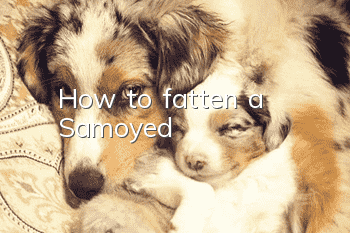How to raise Tibetan Mastiff

1. Baby mastiffs develop relatively quickly within one month after birth, and have a very strong appetite. Breast milk usually cannot meet their food needs. Therefore, appropriate amounts of dog food should be fed, and dogs with high nutritional value should be selected. Palatable liquid foods that are easy to digest and absorb are better. For example, add milk powder, broth, cooked egg yolks, gruel, etc. to fresh milk. In addition, add some cod liver oil, multivitamins, bone meal, etc. Otherwise, the baby mastiff may become weak due to malnutrition and affect its growth and development.
2. When the deciduous teeth have fully developed, and if economic conditions permit, you can feed the puppies some cartilage from pigs and cows, but not chicken bones. After pressure-cooking the ribs, try letting the Tibetan Mastiff chew and break them to stimulate the development of its gums, which will help the growth of permanent teeth.
3. The feed of young mastiffs should be supplemented with calcium powder and vitamins, which are necessary for the growth of teeth and bones. Especially purebred dogs with larger skeletons need more calcium during their childhood. Generally, young mastiffs under one year old who are in the growth stage need to supplement the calcium powder content every day at about one teaspoon per 2kg of body weight. As the age increases, the calcium powder and dosage should be increased in proportion.
4. Little Tibetan Mastiffs have a gluttonous habit, so they must be carefully monitored when feeding, and they should not be fed too full. Generally, 70% to 80% full is enough, otherwise it will lead to overfullness and indigestion. It is best to feed The principle of eating small meals frequently can appropriately increase necessary nutrients such as meat, dairy products, calcium, and cod liver oil.
5. After one year old, as the baby mastiff has entered the mature stage and the growth of teeth and bones has stabilized, the demand for calcium powder is relatively reduced. The dosage is about one teaspoon per 15 kilograms of body weight. However, there should be an appropriate amount of outdoor exercise every day and exposure to ultraviolet rays to facilitate the absorption of calcium.
6. Foods Tibetan Mastiffs like
Meat. Tibetan Mastiff is a carnivorous dog breed, and generally likes to eat the meat and bones of cattle and sheep. It likes pork slightly less than beef and mutton.
Animal internal organs. For example, animal heart, liver, spleen, lungs, intestines, blood, etc. are all Tibetan Mastiff's favorites. Although the nutritional value of animal offal is high, it is still necessary to pay attention not to feed too much, otherwise it may cause poisoning, and more seriously, it will affect the growth of bones, which cannot be compensated for the day after tomorrow. Adult Tibetan Mastiffs can eat the liver twice every three weeks!
Animal bones. The Tibetan Mastiff's favorite food is large pieces of animal bones, such as cow bones. These bones are rich in bone marrow and calcium, which are very good for the Tibetan Mastiff's body, especially for the tooth development of young mastiffs. However, sharp broken bones such as chicken racks are not suitable for direct feeding., too sharp bone fragments can easily pierce the Tibetan Mastiff's throat and stomach. It is best to boil them under high pressure or chop them into pieces before feeding them.
The protein that Tibetan Mastiff dogs obtain from the food they eat plays a very important role in it. It can be said that protein is an important component of the Tibetan Mastiff's body tissue. The Tibetan Mastiff is a large dog, so it needs to be supplied with a sufficient amount of protein to ensure sufficient nutrients required for the Tibetan Mastiff's growth and development.
However, the main sources of protein are often meat, animal offal, skeleton, skin, blood, eggs, etc., so you may wish to feed some of these foods appropriately to supplement protein, or find some high-quality dog food with high protein content. To help the growth and development of Tibetan Mastiff.
7. Cleaning and care
Tibetan Mastiffs that are no more than 6 months old are not suitable for water baths. After the Tibetan Mastiff reaches adulthood, a bath once every 1-2 weeks is enough. Frequent bathing of the Tibetan Mastiff will destroy the natural protective oils on its skin, leading to various skin diseases. Since the Tibetan Mastiff's skin is alkaline and much thinner than human skin, it is not suitable for frequent washing.
- How to help a female dog give birth
- How to raise a little Samoyed
- Why do Corgis need to dock their tails?
- How to feed golden retriever medicine
- How to raise a toy poodle
- What fruits can Pomeranian dogs eat?
- How to take a dog’s temperature
- The Difference Between Labrador Retriever and Golden Retriever
- What should a female dog eat after giving birth?
- What are the precautions for bathing a Bichon Frize?



